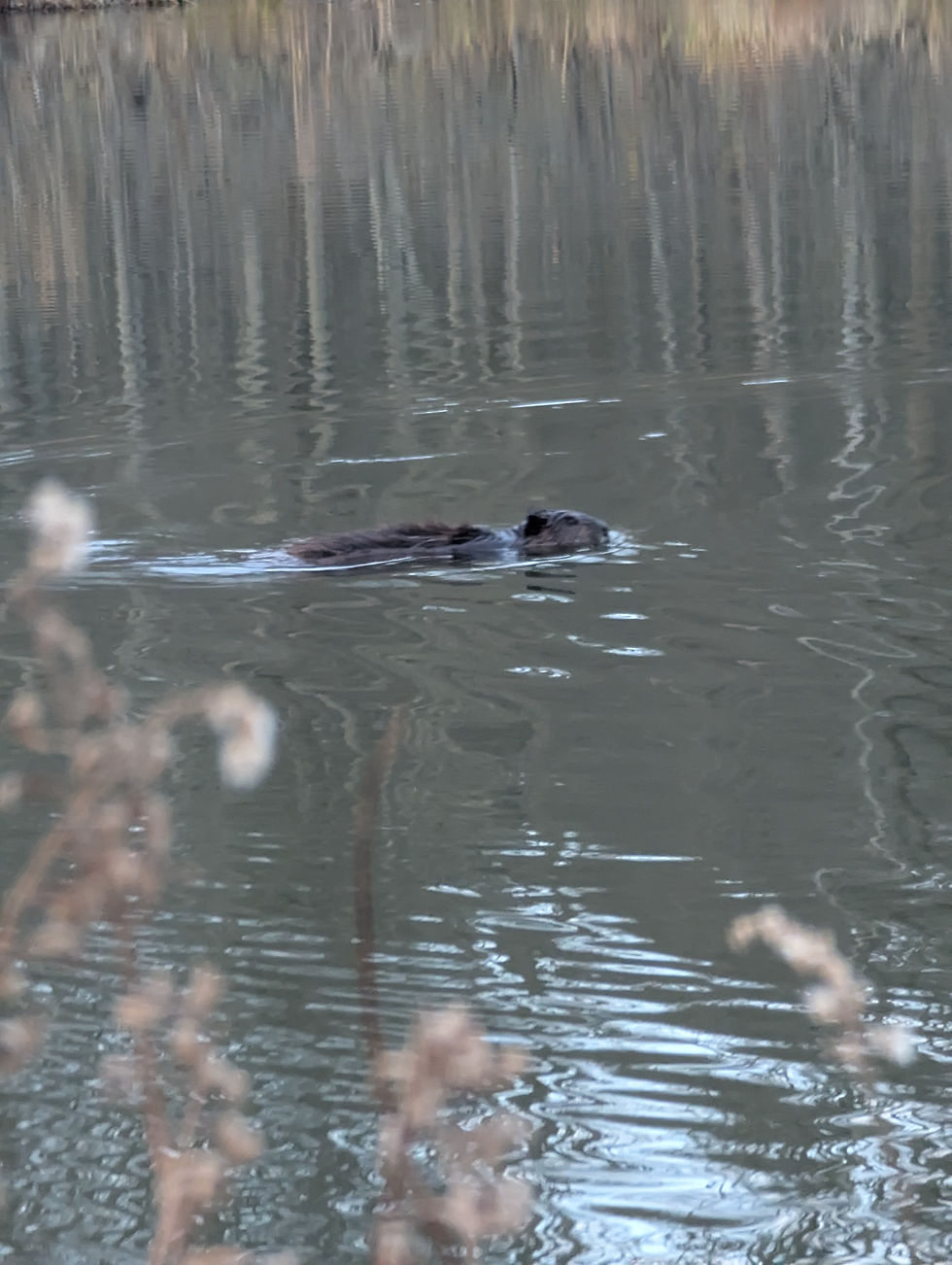Puddlepond in Fall
- Brandon Bielec

- Nov 29, 2024
- 4 min read
Updated: Dec 18, 2024

The end of summer is a bittersweet time for many, but in New York, summer rarely cuts ties suddenly. Indeed, my experience leads me to believe that some of the best summer days come in September and October. This is especially true after the heat of summer partners with long dry or wet spells to induce the miseries of the mid-year: baked hardpan or sweltering humidity, respectively. The hurricanes that ravage the South and coast hit Upstate with more moderation, breaking up stagnant weather patterns and setting a theme for the season in New York. Similarly, the cooling nights bring crisp, dry air that allows the stars to sparkle and humdity-harried humans to breathe. Between the high heat of summer and the bitter cold of winter, autumn’s long days and pleasant nights create a world of respite and reflection.
Nor is this a world for humanity alone, as nature, too, takes a moment to enjoy this transition. While people may dread the impending chill of winter, nature is motivated to embrace the moment. It is a matter of life or death for many species, who rise to the occasion with underappreciated fervor. Spring has a reputation for being the season of life, but it seems to me that fall is nature's true celebration of life. After all, the cold, hard months are coming, so this is the last chance to wander, feast, and prosper.
This vivacity takes many forms at Puddlepond. The fawns of spring are now grown enough to join their mothers and siblings in foraging across the fields. Hawks patrol for migrating songbirds, opposed by the crows, ravens, and jays defending their homes and young. For the first time this year, a family of beavers are displaying their industriousness in building a warm fortress against the cold. The coyotes and other terrestrial predators draw closer to houses as scarcity approaches, driving animals such as the beavers, along with porcupines, chipmunks, and squirrels into hiding and hibernation.
All of this activity plays out with humanity in the front row. The animals often understand that humans aren't the true threat. Predators and freezing days are enough trouble; deer can outrun intruding people, beavers watch closely before diving, and birds simply fly away. That last category includes flocks of turkey, who trot away with feigned indifference at first before taking awkward flight once an intruder has approached too closely. Once they hit the treeline, they're clearly in their element, the earth-toned plumage disappearing among the changing foliage.
The animals may be the most lively facet of nature during autumn, but that changing foliage is not to be discounted. The colors can tell you so much about the year's climate, the health of the flora itself, and the mix of species which makes for a healthy ecosystem. Maples tend to get top billing, but overly yellow leaves tell a tale of thirst and blend in with the beeches of Beukenwald. Conversely, a ruddy canopy relates a richness from summer, but only adds to the rich diversity of turkey-tail hues found in falling oak leaves.
Flowers are farther and fewer between, but fall is the moment of glory for goldenrods. Often confused for their less flashy, and more allergenic, cousins in the ragweed family. Late flowering plants like goldenrod complement the autumn palette while providing a last burst of sustenance for pollinators. Late-fruiting shrubs and vines, the grapes, spice bush, and jewelweeds, provide food for birds and rodents. Clovers and other legumes benefit from late summer seeding to spread as the talk grasses die back, continuing the back-and-forth battle among the ground cover.

Yet another group of humanity’s irritants show their ingenuity during autumn. The thinning greenery leaves a clear avenue for burrs to hitch a ride on the road to new homes. Cockleburrs may be the most aggressive and aggravating of these travelers, but the pain of their pincers is an unfortunate necessity to encourage their temporary hosts to scratch them loose after they bind so tightly in fur and hair. Thistles and burdocks are more loosely bound, but their lighter forms can also gain more ground with short-range aerial dispersal. Even smaller seeds, beggar’s ticks foremost among them, clutch onto animals and clothing in clusters, with spring occasionally revealing an amusingly linear trail of seedlings.
Even the sky joins in the festivities of fall. Meteor showers such as the Taurids or Orionids provide fireworks that may not rival humanity’s explosive celebrations in number, but dwarf them in scale. A single bolide may span hundreds of thousands of miles, concluding a journey of millions or billions of years with a single, flashy finish. Considering the travels of ice and dust shed from the bodies of comets during their vast and lengthy travels gives stark perspective to our annual solar circling marked by each successive autumn. The clear skies of cool autumn nights present the perfect canvas for these dramatic displays. Whether or not a viewer is lucky enough to observe their own lucky shooting star or not, our astral neighbors in the Milky Way create their own beautiful, unfathomably rich tapestry.

If it isn't clear already, summer doesn't falter into a cold and forbidding frost. It gives way to the best season of the year. A time which celebrates all the time spent living in spring and summer, recalls the best of the dog days, tempers them with the ice of impending winter, and creates an atmosphere unreplicated by the rest of the calendar. If Spring is the season of renewal, Fall finds a place in my heart as the season of preparation. The year may end with Winter, but the new beginnings of Spring have their true root in the desperate activity of a gorgeous Upstate Autumn.



Comments